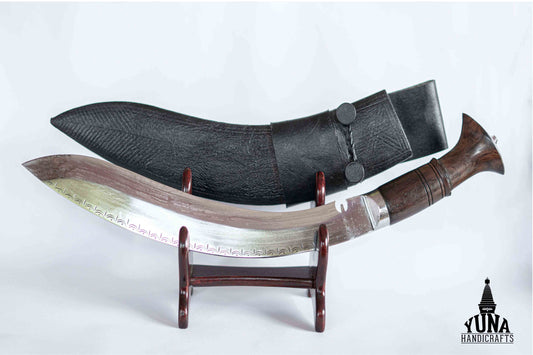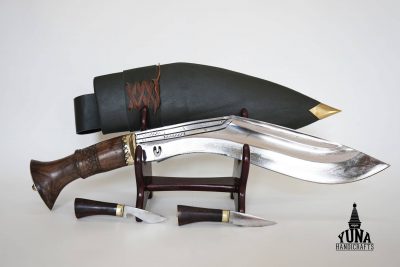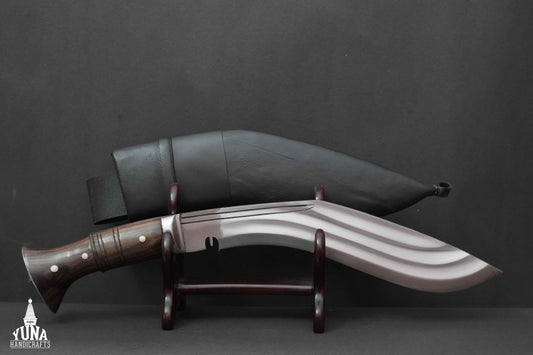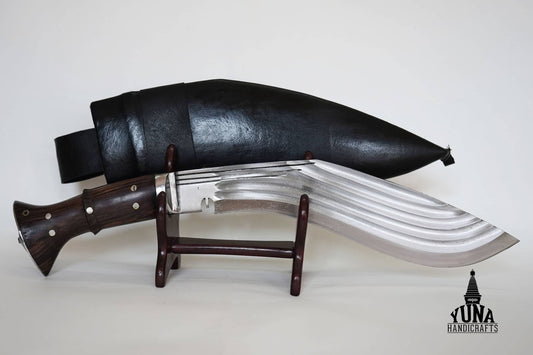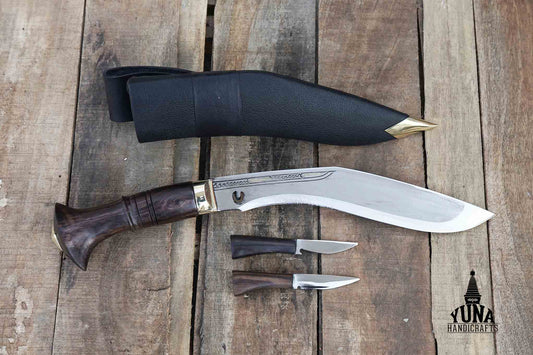
Buying a Good Khukuri in Nepal? Things to Consider While Buying a Khukuri
Buying a good Handmade Nepali Khukuri in Nepal is a challenge because you can find many khukuris with their unique specialty. Nepali Khukuri represents Nepalese culture, brave soldiers, and a peaceful country. There is a long history of Nepalese or Gurkha soldiers. They fought with only a Khukuri to defeat the enemy. The basic Nepali Khukuri is made of carbon steel. The “Sunwar”, “Bishwokarma”, and “Kami” castes of Nepali craftsmen make the Khukuri. The khukuri is also called “Kukri” or “Gurkha blade”.
Parts of Kukri
There are three main parts of Nepali:
1. A blade that is made from steel.
2. A handle that is made from wood and animal horn.
3. A sheath that is made from wood and buffalo leather.
The Khukuri isn’t considered a weapon. It’s a symbol of Nepal, warrior, history, ancestor, and has spiritual significance. You can find different types of Khukuri, and the shapes, sizes are also different.
Khukuri can be used for different cutting purposes like cutting wood, cutting flesh, household work, and used by many armies. Nepali Khukuri is best known for its sharpness and its unique shape and size. A Gurkha army is incomplete without a khukuri. So, if you are buying a good khukuri in Nepal, here are the things to consider while buying a khukuri. Also, Gurkha Khukuri is one of the best handicraft products in Nepal that you can buy.
Blade
The blade material is the first thing you should consider while buying a Khukuri in Nepal. The khukuri’s genuine khukuri blade or main body is made of stainless steel, alloy steel 5160, and spring steel. Stainless steel is comparatively cheaper than other steel, and it’s non-durable. There are also many fake khukuris you can find in Nepal. You can differentiate between the fake khukuris and the real Nepali Khukuris.
The alloy steel 5160 is commonly used to make blades in Nepal. This steel can be curved easily, which is a traditional form of making khukris. The alloy steel can be sharp and durable compared to other steels. Most of the traditional khukuris are made of alloy steel, carbon steel, and spring steel. The Gurkha army used these types of sharp khukuri.
Handle
A considerable factor in choosing a khukuri is its handle and Khukri Stand (https://yunahandicrafts.com/product/wooden-gurkha-khukuri-or-kukri-knife-stand/). Khukri is only effective if they have the right grip. The traditional khukuri handle is made from wood and animal horn. Make sure you check the handle properly and check the grip of the handle. The well-polished handle is often slippery. So, make sure before buying a khukuri, you use it once and check if the grip is slip-resistant or not.
You should also check if the khukuri’s main body is well attached to the end of the handle or not. Check the rivets (Khi) are well placed or not to tighten the blade and handle.
Sheath
You can’t carry the khukuri in a bare hand. So sheath is needed to keep the khukuri. The sheath helps to protect and preserve your knife during movements. Make sure you check the sheath cover, size, and check if the khukuri is fit to the sheath or not. The sheath size should be suitable in length. The Sheath is made of wood and buffalo leather. The size of the sheath should be accurate and precise.
Shape of Blade
You can find different shapes and sizes of blades, and the blade material can also be different. The purpose of using the khukuri might also be different. The different shape of the blade is used for different cutting purposes. Make sure you check the Edge (Dhar) of the khukuri is sharp enough. The fuller (Chirra) should be well crafted because it helps to absorb the impact. Also, ensure that the khukuri has a Notch (Kaudi) or not.
All basic Nepali khukuris have a Notch because it helps to drain the blood from the khukuri and prevents the blood from going to the handle or grip. The shape of the blade needs to be well curved. The Tip of the khukuri also needs to be pointed out. So, while buying a Nepali khukuri, consider the khukuri blade for your purpose.
You can see the tang on the backside of the blade, which goes through at the handle’s end. It’s attached to a handle and protected with rivets. There are two tang types: one is the half tang, and the one is a full tang. The half tang isn’t so strong compared to a full tang, and you can’t use this type of khukuri for heavy cutting. The full tang is the strongest and traditional Nepali khukuri, used for heavy cutting and chopping.
Conclusion
In summary, when buying a Nepali Khukuri in Nepal, consider aspects such as blade material, handle grip, sheath fit, tang type, weight, origin, and craftsmanship. Asking about the history and specifics of the khukuri will help ensure you select a high-quality item that matches your purpose.

